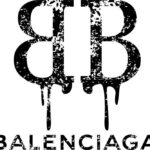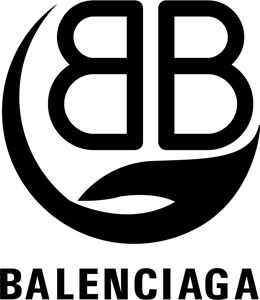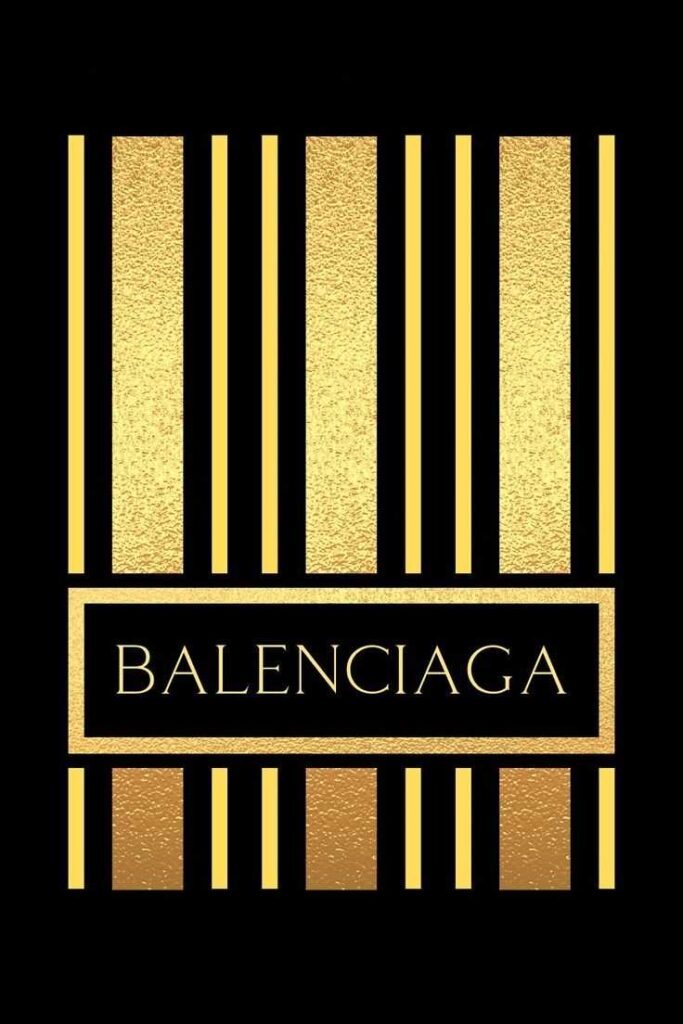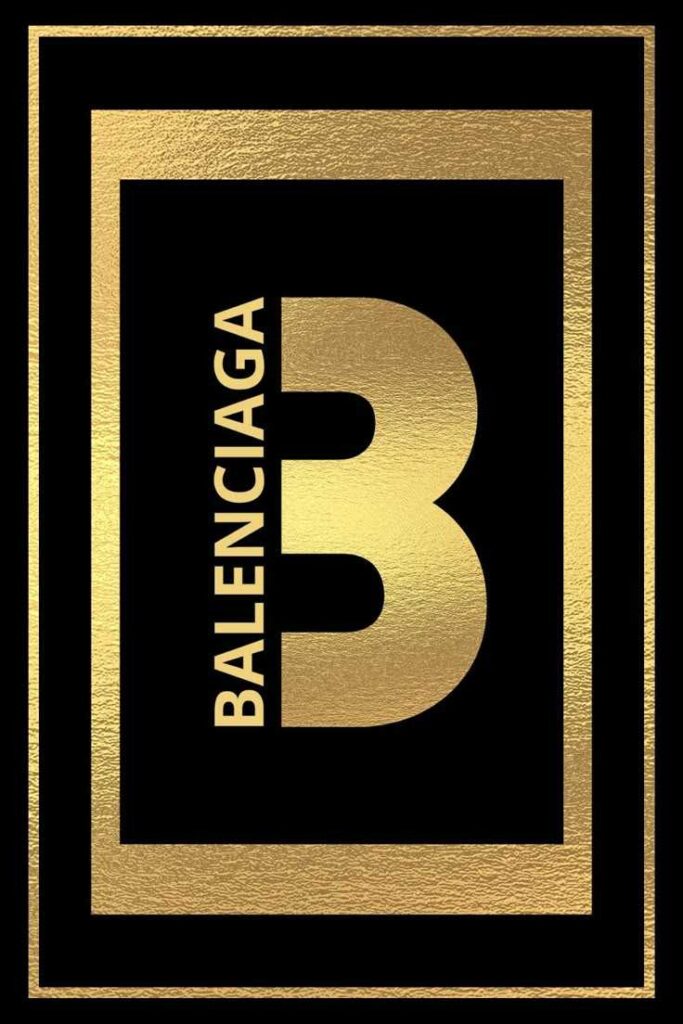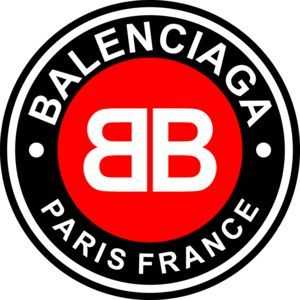The Balenciaga logo is one of the boldest and most distinctive in modern luxury fashion. Stripped of flourishes and dripping with minimalist confidence, it reflects the brand’s radical approach to design, identity, and cultural influence. While it may look simple at first glance, the logo carries deep meaning — symbolizing Balenciaga’s evolution from classic couture to street-style dominance in today’s fast-paced fashion world.
1. A Quick Look at the Brand
Balenciaga is a luxury fashion house founded in 1917 in San Sebastián, Spain, by the legendary designer Cristóbal Balenciaga. Known for his precision tailoring and revolutionary silhouettes, Balenciaga was revered by fashion greats like Christian Dior. After relocating to Paris, the brand quickly rose to prominence for its sculptural, avant-garde designs that challenged the norms of post-war fashion. Today, with its headquarters in Paris and led by creative director Demna Gvasalia, Balenciaga has transformed into a global powerhouse that blends high fashion with streetwear aesthetics. Its influence spans continents, red carpets, and digital culture — making the Balenciaga logo a globally recognized symbol of bold, boundary-pushing style.
2. The Meaning Behind the Balenciaga Logo

At first glance, the Balenciaga logo may seem stark and understated — just a name in bold, uppercase letters. But this minimalist design is deeply intentional. The simplicity of the logo reflects the brand’s fearless break from tradition and its embrace of modernism. By using a clean, sans-serif typeface in a monochrome palette, the logo conveys power, clarity, and timelessness. It doesn’t rely on ornate symbols or emblems — instead, its strength lies in its restraint. The all-caps lettering suggests authority and precision, much like Balenciaga’s fashion creations themselves. Designed to feel universal and even utilitarian, the logo rejects flashy branding in favor of something more intellectual and enduring. In many ways, the Balenciaga logo is a visual embodiment of the brand’s philosophy: stripped-down, unpretentious, and unapologetically bold.
3. A Brief History of Balenciaga (1917–Present)
1917–2013: From Spanish Couture to Silent Elegance
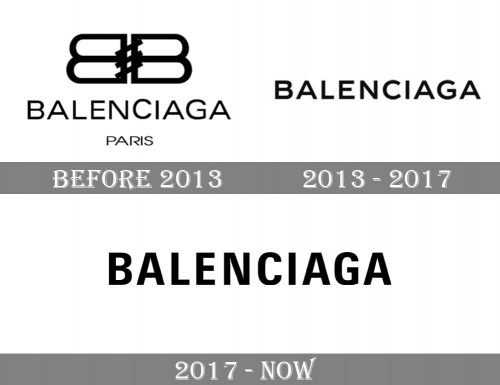
Balenciaga was founded in 1917 by Cristóbal Balenciaga in San Sebastián, Spain. Known as “the master of us all” by Christian Dior, Cristóbal was a revolutionary couturier who redefined fashion with sculptural silhouettes, clean lines, and architectural precision. His designs rejected decoration in favor of form, structure, and restraint — a philosophy that continues to influence the brand’s DNA today.
After relocating to Paris in 1937 due to the Spanish Civil War, Balenciaga quickly became one of the most respected names in high fashion. Through the 1940s to 1960s, the house produced legendary styles like the sack dress, balloon jacket, and baby doll dress — all emphasizing shape and innovation. During this time, Balenciaga became known for its serif-based, elegant wordmarks that matched the refined aesthetic of Cristóbal’s couture vision.
Following the founder’s retirement in 1968 and death in 1972, the brand went through several quiet decades, with licensing and limited innovation. However, the early 2000s saw a rebirth.
Under designers like Nicolas Ghesquière (1997–2012), Balenciaga regained relevance by introducing futuristic tailoring, experimental fabrics, and edgy elegance. Ghesquière’s tenure modernized the label while still honoring the founder’s architectural roots.
During this period, the Balenciaga logo maintained a classic, elegant serif look — reflecting the brand’s sophisticated yet modern tone.
2013–Present: Reinvention, Irony & Streetwear Luxury
In 2013, Alexander Wang briefly took over as creative director, infusing the brand with a sleeker, sportier edge. But it was the arrival of Demna Gvasalia in 2015 that completely transformed Balenciaga’s image and repositioned it as a cultural powerhouse.
Demna brought with him a new design language: oversized silhouettes, streetwear influences, irony, and anti-fashion sensibility. He stripped the brand of its heritage look and embraced an aesthetic rooted in commentary and provocation.
This new direction became visually concrete in 2017, when Balenciaga introduced a completely redesigned logo — a bold, sans-serif, all-caps wordmark inspired by public transportation signage. The new Balenciaga logo was stark, modern, and intentionally unglamorous — signaling a shift from classical luxury to postmodern cool.
Under Demna, Balenciaga has become:
- A leader in luxury streetwear
- A force in pop culture, meme culture, and digital fashion
- A brand that pushes boundaries in sustainability, technology, and genderless design
The era from 2013 onward represents Balenciaga’s most radical transformation — both visually and culturally. From its minimalist logo to its maximalist designs, the brand is now synonymous with cultural commentary, irony, and global influence.
Meaning
The name Balenciaga comes directly from its founder, Cristóbal Balenciaga, a Spanish designer renowned for his visionary craftsmanship and innovation in haute couture. While the name itself doesn’t have a literal meaning in another language, it has become synonymous with precision, sculptural design, and luxury. Over the decades, the name “Balenciaga” has grown into a symbol of artistic rebellion — where old-world craftsmanship meets futuristic fashion.
Logo: Design, Symbolism & Evolution

The Balenciaga logo has gone through a stark transformation, much like the brand itself.
- Early Years (Mid-20th Century): The original logo featured elegant serif typography, reflecting the refined couture sensibility of Cristóbal Balenciaga’s era. It was graceful and traditional — much like the fashion it represented.
- Modern Redesign (2017–Present): In 2017, the logo was reinvented under Demna Gvasalia. The new wordmark uses a bold, sans-serif font with all-capital letters and a tight, functional layout. It was inspired by public transportation signage, chosen deliberately to evoke ideas of functionality, universality, and anti-luxury. This approach made the Balenciaga logo feel both cold and commanding — a perfect fit for the brand’s modern, minimalist identity.
The current logo carries no icons or emblems — just raw type. It stands as a symbol of postmodern fashion, where the absence of embellishment becomes a powerful statement in itself.
Tagline or Slogan
Balenciaga does not use a traditional tagline — and that’s entirely by design. The absence of a slogan reflects the brand’s philosophy of letting the product and presentation speak for itself. In an era where most fashion houses rely on catchy phrases, Balenciaga chooses silence, mystery, and visual consistency. This restraint adds to the brand’s minimalist, high-concept identity and aligns with the Balenciaga logo’s clean and unspoken authority.
Color Palette, Fonts & Visual Theme
Balenciaga’s visual identity is defined by simplicity, neutrality, and impact.
- Color Palette:
- Primary: Black and White
- Occasional accents: Grey tones or minimalist earth shades (in packaging or campaigns)
- Purpose: The stark monochrome palette creates contrast and allows the clothing — not the branding — to do the talking.
- Typography:
- Font style: A custom sans-serif font, reminiscent of Arial Black or Helvetica Neue
- Visual character: Bold, uniform thickness, minimal spacing
- Function: The typography itself becomes the identity. It is strong, silent, and unmistakable — just like the Balenciaga logo.
- Visual Theme:
- Clean, clinical, high-concept design
- Often paired with surreal or dystopian photography
- Consistently minimalist across web, print, and store design
This clean aesthetic removes the noise, creating space for artistic expression, irony, or cultural experimentation to take center stage.
Brand Personality and Tone of Voice
Balenciaga’s personality is one of rebellion, irony, and high-intellect minimalism. It doesn’t try to be liked — it dares to be understood. It speaks to those who “get it,” and doesn’t chase mass approval. This makes the brand feel edgy, elite, and thought-provoking.
- Tone of Voice:
- Cool, dry, and serious — sometimes bordering on clinical
- Often silent or cryptic in campaigns, allowing mystery to build hype
- Deliberately avoids flashy marketing language
Whether expressed through a fashion show in a mud pit or a viral campaign without words, Balenciaga’s voice is unapologetically bold, always calculated, and deeply modern — just like its stripped-back logo.
4. Balenciaga’s Mission and Vision
Balenciaga’s mission goes beyond creating beautiful clothing — it aims to redefine the boundaries of fashion itself. The brand challenges expectations, disrupts traditional ideas of luxury, and uses design as a form of cultural commentary. Whether through oversized silhouettes, minimalist logos, or unconventional materials, Balenciaga consistently pushes against the norm.
Its vision is to lead fashion into the future while staying grounded in its roots of innovation and craftsmanship. Rather than follow trends, Balenciaga often creates them, using irony, utility, and subversion to inspire the next generation of design. The Balenciaga logo itself reflects this vision — stripped-down, modern, and uncompromisingly bold.
5. What Services and Products Does Balenciaga Offer?
Balenciaga offers a wide range of luxury fashion products, seamlessly blending high-end tailoring with streetwear sensibilities. The brand is especially known for:
- Ready-to-Wear Apparel: Statement coats, deconstructed blazers, oversized hoodies, and sculptural dresses for both men and women.
- Footwear: Iconic pieces like the Triple S sneakers, Speed Trainers, and fashion-forward collaborations (like Balenciaga x Crocs).
- Accessories: From structured tote bags and logo caps to futuristic sunglasses and bold jewelry.
- Haute Couture: Revived in 2021 after decades, Balenciaga’s couture line marks a return to its founding roots in craftsmanship and innovation.
- Fragrance & Collaborations: Limited edition perfumes and brand collabs with Adidas, Fortnite, and other cultural icons extend its influence beyond the runway.
Every product Balenciaga releases is more than just fashion — it’s a statement, a disruption, or a form of modern luxury reimagined. Whether printed with the Balenciaga logo or designed with its spirit in mind, each piece carries the brand’s signature edge.
6. Who Is Balenciaga’s Target Audience?
Balenciaga speaks to a new generation of luxury consumers — those who want more than just a logo; they want a statement. The brand appeals strongly to fashion-forward Millennials and Gen Z, typically between the ages of 20 and 40, who crave individuality, irony, and cultural relevance. This audience includes creative professionals, streetwear lovers, digital trendsetters, and celebrities, all of whom value design that challenges norms.
Rather than chase elegance in the traditional sense, Balenciaga’s audience seeks bold silhouettes, oversized proportions, and minimal branding with maximum attitude. They’re not afraid to wear something controversial or unusual — in fact, they expect it. Whether it’s a meme-worthy hoodie or a pair of exaggerated sneakers, this crowd connects with the brand’s fearless creativity. Balenciaga doesn’t just sell clothing — it sells a lifestyle of rebellion, irony, and intelligent fashion disruption.
7. Brand Personality & Identity
Balenciaga’s identity is built on contradictions that work beautifully together: minimal yet provocative, high fashion yet street, silent yet loud. At its core, the brand’s personality is:
- Rebellious: It defies fashion norms and questions what “luxury” should look like.
- Intellectual: Many of its designs comment on politics, culture, and modern society.
- Ironic: The brand plays with ideas of taste, branding, and excess.
- Cold but Confident: Its visual tone is stark and serious, which ironically makes it bold.
Visual Identity Breakdown:
- Name Meaning: Named after founder Cristóbal Balenciaga, preserving his legacy while evolving his vision.
- Logo: Clean, sans-serif, all caps — a modernist approach to timeless branding. The Balenciaga logo is instantly recognizable yet deliberately neutral, acting as a canvas for louder creative expression.
- Color Palette: Dominantly black and white — minimalist, striking, and versatile.
- Typography: Inspired by industrial fonts like Arial Black or Helvetica Neue, emphasizing utility and functionality over decoration.
- Tone of Voice: Serious, intellectual, ironic — whether it’s a campaign or a fashion show invite, the brand’s message is always clear, calculated, and culturally charged.
Balenciaga doesn’t just have a look — it has an attitude, and its logo is the silent yet powerful anchor to everything it represents.
8. Brand Positioning & Differentiation
Balenciaga doesn’t just occupy a space in the luxury market — it disrupts it. Positioned firmly in the high-end luxury segment, Balenciaga breaks traditional expectations of what a luxury brand should be. While other fashion houses might emphasize refinement and heritage, Balenciaga leans into bold design, irony, and cultural critique.
What truly sets Balenciaga apart is its ability to stand out without screaming. The brand’s stark, industrial-looking wordmark — the Balenciaga logo — is a perfect example of this. In a sea of logos dripping with flair, Balenciaga’s is cold, clean, and commanding. That minimalism becomes its loudest form of identity.
Balenciaga competes with brands like Gucci, Louis Vuitton, and Off-White, but distinguishes itself by blending streetwear edge with couture craftsmanship. Its unique selling proposition (USP) lies in its fearless contradiction: it’s fashion that doesn’t try to please — it provokes, challenges, and dominates conversation.
9. Marketing & Brand Strategy
Balenciaga’s marketing is anything but conventional. Forget glossy magazine ads or red carpet clichés — Balenciaga thrives on shock value, storytelling, and digital virality. Whether it’s dressing models in mud or turning a fashion show into a Simpsons episode, Balenciaga constantly reinvents how luxury is presented.
Key Strategies Include:
- Digital-First Campaigns: The brand owns social media platforms like Instagram and TikTok, where campaigns go viral without explanation — sparking conversation and curiosity.
- Cultural Collaborations: From Fortnite skins to Crocs x Balenciaga, it fuses high fashion with unexpected partners, reaching younger audiences on their turf.
- Fashion as Performance Art: Runway shows are often surreal and conceptual — staged in dystopian landscapes, demolished cities, or digital worlds.
- Brand Storytelling: Every campaign tells a story — often one that blurs the line between fashion and social commentary. The Balenciaga logo appears subtly, almost coldly, adding to the mystique.
Rather than oversell, Balenciaga lets mystery and minimalism do the work. It’s a masterclass in modern branding — where being “different” isn’t a risk, it’s the whole strategy.
10. Cultural Impact & Public Perception
Balenciaga isn’t just a fashion label — it’s a cultural force. Few brands have managed to become as viral, controversial, and conversation-worthy while still maintaining an elite luxury status. From red carpets to social media memes, Balenciaga has embedded itself into the modern pop culture fabric.
Major Cultural Moments:
- Kim Kardashian’s masked Met Gala appearance in a full Balenciaga look made headlines worldwide — mysterious, iconic, and on-brand.
- Kanye West (Ye) regularly partners with the brand, wearing and promoting its vision of high-fashion-meets-streetwear.
- The Simpsons x Balenciaga episode merged animation, satire, and fashion week — a historic moment in cross-medium brand storytelling.
- Viral collaborations with Fortnite, Crocs, and Adidas blurred the lines between fashion and fandom.
The brand’s deliberate detachment — from silent social media posts to minimalist campaigns — builds mystique. While some criticize it for being too ironic or elitist, its fans celebrate it as visionary, fearless, and unapologetically different.
The Balenciaga logo, often placed quietly on oversized clothing or futuristic sneakers, has become an anti-logo that ironically commands more attention than flashy symbols ever could.
11. Customer Experience & Community Engagement
Despite its avant-garde image, Balenciaga is keenly aware of how to serve and retain a modern luxury consumer. Its customer experience is built on exclusivity, surprise, and subtlety — offering both a high-end boutique feel and a digital-first presence.
Offline Experience:
- Flagship stores in Paris, New York, Tokyo, and more offer a museum-like shopping experience — minimal interiors, curated music, and bold product displays.
- VIP styling appointments and private previews reflect the brand’s commitment to personalized luxury.
Online & Digital Engagement:
- Balenciaga leans into digital storytelling, often dropping collections on social media with little explanation — prompting fans to decode the meaning.
- Campaigns are interactive and immersive, often inviting commentary, debate, and user-generated content.
- Even limited information builds hype: the brand knows that less is more when your logo — like the Balenciaga logo — already carries weight.
The Balenciaga community isn’t just a fan base — it’s a culture. From influencers to stylists, gamers to Gen Z fashion enthusiasts, this tribe shares a taste for the bold, the ironic, and the unexpected.
12. Brand Evolution Over Time
Balenciaga’s transformation over the decades is nothing short of remarkable. What began as a classical couture house in early 20th-century Spain is now one of the most disruptive forces in global fashion. This evolution reflects not just a shift in design aesthetics, but a complete rethinking of what it means to be a luxury brand in the modern era.
In the early days under founder Cristóbal Balenciaga, the focus was on architectural tailoring and timeless elegance. The brand was admired by other designers and dressed royalty and elites across Europe. Its original visual identity — including the early Balenciaga logo — echoed this sophistication, with serif fonts and a refined tone.
But in 2015, with the arrival of Demna Gvasalia as creative director, the brand underwent a radical transformation. Gvasalia brought streetwear sensibility, irony, and conceptual art into the mix. This new chapter included the 2017 logo redesign, which dropped the classic aesthetic in favor of a stark, sans-serif wordmark — signaling a new era of utilitarian luxury and global modernism.
Balenciaga’s evolution has also included:
- A return to haute couture in 2021 after 50 years
- Embracing digital innovation, including video game skins and metaverse fashion
- Experimenting with normcore, dystopia, and satire through clothing and campaigns
Through all these changes, one thing remained constant: Balenciaga’s fearless desire to stay ahead of culture, not behind it.
13. Milestones & Achievements
Balenciaga has reached numerous milestones that not only solidify its fashion credibility but also affirm its cultural and business success.
Key Achievements:
- Couture Comeback (2021): The brand’s first couture show in over five decades was met with critical acclaim, bridging past and future in one runway.
- Global Expansion: With flagship boutiques in fashion capitals like Paris, New York, Shanghai, and Dubai, Balenciaga has established a truly worldwide presence.
- Award Recognition: Regularly honored at fashion award shows and praised in global publications for innovation, creativity, and branding excellence.
- Iconic Products: The Triple S sneaker, Knife boot, and Speed trainer have become luxury streetwear staples.
- High-Impact Collaborations: Cross-industry collabs with Adidas, Crocs, Fortnite, and even The Simpsons showcase the brand’s power to merge fashion with entertainment, tech, and humor.
- Celebrity Endorsement: Consistent appearances on A-listers like Kim Kardashian, Kanye West, Bella Hadid, and Rihanna have made Balenciaga synonymous with avant-garde cool.
The Balenciaga logo, often featured on these iconic pieces and moments, has become not just a marker of fashion, but a badge of influence — worn proudly, recognized globally, and forever evolving.
Conclusion
In an industry filled with loud logos, ornate emblems, and over-explained branding, the Balenciaga logo stands alone — silent, stark, and unapologetically bold. What began as a traditional couture house in 1917 has evolved into one of the most provocative, forward-thinking fashion brands in the world. From Cristóbal Balenciaga’s architectural gowns to Demna Gvasalia’s oversized streetwear and ironic minimalism, the brand has never stopped innovating — and neither has its visual identity.
The logo’s transformation from elegant serif to all-caps sans-serif mirrors the brand’s shift from heritage luxury to postmodern cool. It’s more than just typography — it’s a design philosophy. One that speaks volumes by saying less. Whether it’s printed on a hoodie, embossed on a sneaker, or floating silently in a campaign, the Balenciaga logo carries weight. It doesn’t scream status — it defines it.
For fans, creatives, and curious consumers, Balenciaga represents more than fashion. It’s a cultural signal, a rebellion wrapped in luxury, and proof that in today’s world, power often comes in minimalist form.
